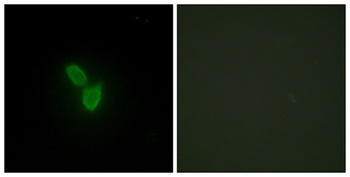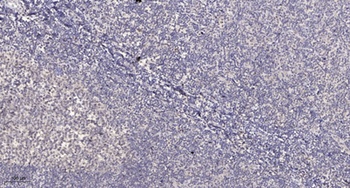You have no items in your shopping cart.
Cart summary
Item 1 of 4
Item 1 of 4
PARD3A rabbit pAb
Catalog Number: orb766024
Product Properties
| Catalog Number | orb766024 |
|---|---|
| Category | Antibodies |
| Description | Rabbit polyclonal antibody to PARD3A |
| Clonality | Polyclonal |
| Isotype | IgG |
| Conjugation | Unconjugated |
| Reactivity | Human, Mouse, Rat |
| Concentration | 1 mg/ml |
| Buffer/Preservatives | PBS with 0.02% sodium azide and 50% glycerol pH 7.4. |
| Purification | The antibody was affinity-purified from rabbit antiserum by affinity-chromatography using epitope-specific immunogen. |
| Immunogen | The antiserum was produced against synthesized peptide derived from human PARD3. AA range:1141-1190 |
| MW | 151 |
| Tested applications | ELISA, IF, IHC-P, WB |
| Dilution range | Western Blot: 1/500 - 1/2000. Immunohistochemistry: 1/100 - 1/300. Immunofluorescence: 1/200 - 1/1000. ELISA: 1/20000. Not yet tested in other applications. |
| Source | Rabbit |
| Storage | Maintain refrigerated at 2-8°C for up to 2 weeks. For long term storage store at -20°C in small aliquots to prevent freeze-thaw cycles. |
| Alternative names | Anti-PARD3 antibody, anti-PAR3 antibody, anti-PAR3 Read more... |
| Note | For research use only |
Images

Western Blot analysis of various cells using PARD3A Polyclonal Antibody.

Immunofluorescence analysis of HepG2 cells, using PARD3 Antibody. The picture on the right is blocked with the synthesized peptide.

Western blot analysis of lysates from COLO205 cells, using PARD3 Antibody. The lane on the right is blocked with the synthesized peptide.

Immunohistochemical analysis of paraffin-embedded human tonsil. 1, Antibody was diluted at 1:200 (4°C overnight). 2, Tris-EDTA, pH9.0 was used for antigen retrieval. 3, Secondary antibody was diluted at 1:200 (room temperature, 30min).
Reviews
PARD3A rabbit pAb (orb766024)
Based on 0 reviews
Participating in our Biorbyt product reviews program enables you to support fellow scientists by sharing your firsthand experience with our products.
Login to Submit a Review

